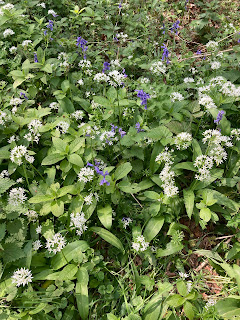Common Stinkhorn
I found possibly the most comedic fungus, the Common Stinkhorn (Phallus impudicus), this week. Both the Latin and common names fit it very well. It is very stinky and phallic in shape. The species name "impudicus" means "immodest" or "shameless" in Latin, so the full name literally means "shameless phallus"!
Before the unmistakeable shape of the stinkhorn emerges however, it is initially contained in an egg-like sac, which eventually bursts open, revealing the mature fruiting body of the fungus. This 'egg' is actually edible and can be enjoyed raw (though only if you can stomach the smell, as although it is not as strong at this stage, it's still pretty putrid!), it is reported to taste radish-like. This stage of the fungus can be observed all year round, but can be more difficult to detect without the aid of the far-penetrating smell of the emerged 'phallus'.
This smell is so revolting that it has been mistaken for dead animals and blocked drains. But, it plays a vital role in the fungus' spore distribution. The smell attracts flies and other insects that mistake it for rotting flesh. The top of the fungus is coated in a sticky, dark brown gleba that contains the spores. The gleba liquifies as a fly lands on it and the fly gorges on the sugary substance, whilst also ingesting (but not digesting) some spores. Bits of the sticky gleba also become attached to the fly, so the spores are distributed to the carrion or dung the fly visits next.
The stinkhorn can grow in most areas of the UK, including woodland and gardens. It can be more prevalent around areas with more faeces and/ or carrion, for example badger setts.
As you can probably imagine, the stinkhorn has many other, and slightly ruder, folk names that it has been given throughout history. Herbalist John Gerard called it "prike mushroom" in 1597, one of the slightly better names. Reportedly, Charles Darwin's daughter used to collect stinkhorns she found and burn them in secret to protect the morals of her young maids. Some Victorians would also deliberately destroy any they found to prevent 'impressionable' young women from seeing them!
References/ more information: Stinkhorn (Phallus impudicus) - Woodland Trust , Stinkhorn fungus | The Wildlife Trusts , Stinkhorn (Witch's egg): Foraging for culinary and medicinal use - BritishLocalFood
(All photos taken by me)





Comments
Post a Comment